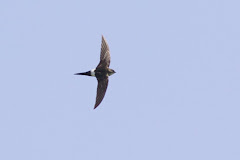The State of the UK's Birds is a report published by the RSPB for a coalition of conservation organisations, including the RSPB, the British Trust for Ornithology, The Wildfowl & Wetlands Trust, The Countryside Council for Wales, Natural England, the Northern Ireland Environment Agency, Scottish Natural Heritage and the Joint Nature Conservation Committee. The most recent chapter, the tenth anniversary of this annual report, shows the mixed fortunes of Britain's birds, with over 60 per cent of the UK's rare breeders increasing due to targeted conservation efforts but 4 out of 10 common species declining.
Some of the key bird conservation stories coming from 10 years of the report include:
- A continued decline of farmland birds
- The dramatic rise of Bitterns from 19 to 82 males
- An increase in the numbers of Dartford Warblers, Nightjars and Woodlarks in line with the positive management of heathland
- An increase in the number of Corncrake, Stone Curlew and Cirl Bunting, thanks to positive habitat management
- A dramatic recovery in the fortunes of the White-tailed Eagle and Red Kite, thanks to reintroduction programmes
- An increase in the number of Little Egrets, which only bred for the first time in the UK in 1996
- A decrease in the numbers of Kittiwake and Guillemot, two species of seabird having their most important EU populations in the UK
Dr Mark Avery, the RSPB's Conservation Director, said: "Over the last decade we've enjoyed some cracking conservation successes, including removing some threatened species from the Red List and increasing the populations of Red Kite, Bittern, Avocet, Osprey, Stone Curlew and Cirl Bunting. However, these triumphs are countered by continued declines of some widespread species, like the Skylark, Kestrel, Willow Warbler and Grey Partridge."
I think every birder can relate to these findings. I can remember the thrill of seeing my first Red Kite, many years after I started birding, during a visit to the last toehold of mid-Wales to see these majestic birds. Many years later they are a common sight in many parts of the UK. At the same time the Grey Partridge is now a very scarce visitor to my former local patch in Norfolk and Willow Tit hasn't been recorded in the area for many years. Let's hope this report stimulates new efforts to protect not just the rare birds of Britain but the many once widespread species that are in serious decline.
Subscribe to:
Post Comments (Atom)






No comments:
Post a Comment